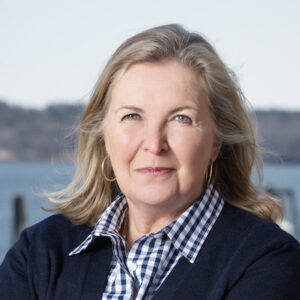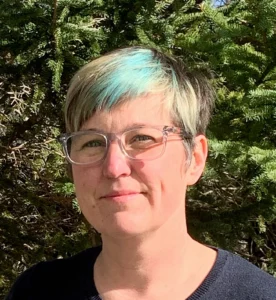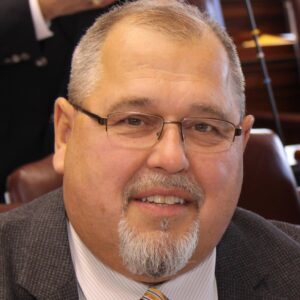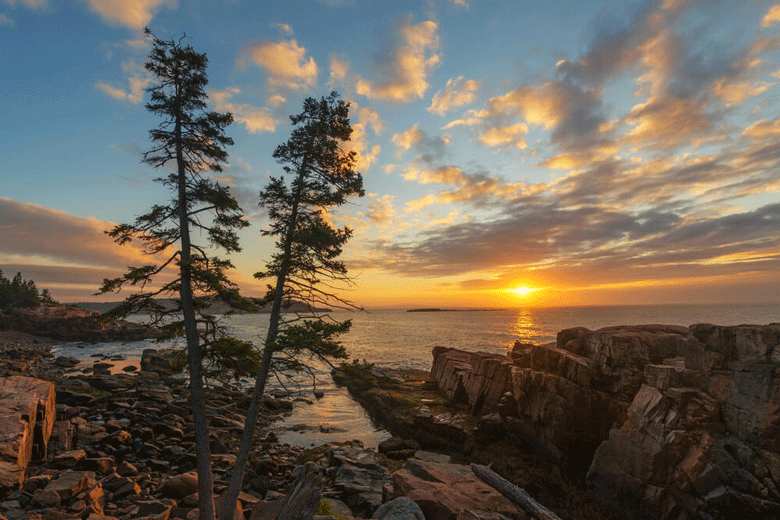Even before the storms in early January that devastated the Maine coast, our region faced big challenges, or “headwinds” as we’re calling them here. We reached out to some leaders in key sectors to ask how to best navigate, or plot a course correction for these headwinds.
Kim Hamilton, president, Island Institute (publisher of The Working Waterfront):
As we enter 2024, island and coastal communities face mighty headwinds in securing critical federal and state funding.
Our rural, coastal communities are part of the magic of the Maine experience for tourists and residents alike. Behind that salty, bucolic backdrop lies a profound challenge: securing and managing public funds to keep these iconic towns livable and vibrant.

Town managers, select boards, and volunteers will spend hundreds of hours applying for and managing these awards, with their complex reporting and matching fund requirements and reimbursement schedules. If successful, these communities will reap the benefits of broadband expansion, sea level rise preparedness, access to affordable energy, workforce development, and even basic life-saving equipment like ambulances and fire trucks.
In this new year, with mixed global economic signals and big political stakes, organizations like ours serving these communities will need to increase their technical assistance, ensuring that coastal Maine is not left behind or left out. This includes using local knowledge to improve federal and state processes, building core community capacity to navigate the funding landscape, and piecing together the puzzle of public funding through the lens of local government. This will ensure that the allocation of public funds is fair, inclusive, and within reach for even the most capacity-constrained communities.
Val Peacock, town councilor, Bar Harbor:
Acadia National Park recorded 3.9 million visits in 2023. In 2013, the number was 2.25 million. While not an exact count of visitors to Bar Harbor, it does help us understand that visitation has doubled over the past 10 years.
As a leading tourist destination, increased levels of tourism bring direct economic benefits to Bar Harbor residents and business owners and the state through sales and lodging tax revenues. But,increased visitors also bring challenges, including the expansion of short-term vacation rentals, congestion, and traffic; wear and tear on public infrastructure; and concerns from citizens about whether we can continue to host millions without eroding the coastal community that 5,000 people call home.

Those concerns were clearly articulated as voters passed a citizen’s initiative in November of 2022 regulating the number of cruise ship passengers that can disembark in Bar Harbor. While the fate of the ordinance awaits a ruling on its constitutionality, the Bar Harbor Town Council continues work to set priorities for 2024 including planning and policy work for sustainable tourism, affordable housing, and seeking alternate revenue sources to stabilize property tax rates and offset the cost of tourism to the municipal budget.
Sebastian Belle, executive director, Maine Aquaculture Association:
More and more coastal community members have no family or historical connection to making a living from the ocean. The ways many new residents view and value the ocean are often quite different from folks whose livelihood depends on the commercial use of the oceans.
As these demographic shifts occur, Maine’s working waterfront communities also find themselves facing a rapidly changing marine ecosystem driven by climate change. Those environmental changes directly affect the resources that are the basis for our working waterfront economy. Traditional working waterfront families and communities are struggling to adapt and find ways to continue their maritime heritage. Navigating a course through these challenges will require new tools and changes in how we use the ocean to provide a viable future for the next generation of working waterfront families.

Aquaculture is one tool that will help coastal communities become more resilient and provide opportunities for the next generation to continue Maine’s maritime heritage.
As a marine resource user, aquaculture permits go through a rigorous public process that ensures they will not damage the environment and create any conflicts with other marine resource users. Put another way, they need “social license” to operate. That’s a good thing and the state’s aquatic farmers support that requirement. Social license requires that accurate information is available to the public and that resource management agencies base their decisions on good data.
As Maine’s coastal communities consider how to preserve their working waterfront traditions, accurate and objective information about aquaculture will be vital. Maine is lucky that we have some of the most qualified aquaculture and marine ecosystems researchers in the world. Their objective engagement will be critical to the sustainable use of aquaculture as a tool to grow local, healthy food and maintain our working waterfront traditions.
Rebecca Hatfield, president and CEO of Avesta Housing:
Maine is experiencing an unprecedented housing crisis and it is a complex issue. The steep escalation of costs over the last several years has created financial barriers that impede housing development, exacerbating the state’s already pressing affordability issues.

This amplifies the struggle for both those seeking quality housing and for developers trying to help. Zoning and land-use restrictions limit the creation of housing options. The lack of sufficient funding resources further complicates the equation.
Addressing these challenges requires a strategic combination of policy measures, collaborations, and multi-faceted approaches. Solutions like LD 2003, recent legislation aimed at incentivizing higher-density housing and expediting local approval processes, are essential.
Continued state and federal resources, local funding mechanisms, and public-private partnerships can collectively contribute to a comprehensive strategy. By leveraging the strengths of both public and private sectors, innovative financing models and partnerships can be explored to offset costs and facilitate sustainable housing solutions.
Mark Dion, mayor of Portland:
As with all coastal communities in Maine, Portland faces challenges in retaining access to the ocean for fisheries, businesses, and citizens. In 2024, we look forward to making landmark progress in expanding physical and functional access in key areas.
We are making progress in our long-term efforts to dredge for the harbor’s piers, marinas, and ramps. We plan to go to bid soon for construction of a confined aquatic disposal cell to dispose of contaminated dredged sediments. Construction of the cell is anticipated for next winter with dredging to follow during the 2025-2026 dredge season. Dredging of the balance of Portland Harbor marine facilities will continue during subsequent years as funding becomes available.

Portland is reconfirming our commitment to the groundfish industry by modernizing the organization and governance for the Portland Fish Exchange and the Portland Fish Pier. Stabilizing the finances and management of these critical infrastructures maintains access to markets for Maine’s struggling groundfishing fleet. We look forward to streamlining governance, budgeting, and oversight for the Fish Pier complex with a goal of continued and improved service to the fishery.
We will greet the 2024 boating season by opening the first new public landing on the waterfront in over 30 years. Mavodones Landing will greatly expand access to the water (and to the Portland downtown from the water) allowing recreational boaters, marine nonprofits, cruisers, water taxis, and islanders affordable transient berthing in the heart of our thriving Eastern Waterfront.
During the upcoming year and into the future, we will need to meet climate change impacts with clear eyed realism. The sobering storms of the last few weeks remind us in certain terms of the magnitude of the effort to come. We are fortunate, however, to have an engaged community and dedicated staff to engage in that work.
Jeff Putnam, chairman, Maine Lobster Advisory Council:
As we enter 2024, the industry must be proactive in monitoring the health of the resource. The Department of Marine Resources conducts trawl surveys, a ventless trap program, settlement tracking, and sends staff out on harvester boats to count and measure every lobster trapped. There has been a decline across the spectrum in recent years that has triggered a measure increase effective Jan. 1, 2025.
Harvesters statewide have participated in these surveys, listened to the results, and provided feedback from their own perspectives. The feedback that many have provided, and what the most recent surveys are capturing, is that there are positive signs in the juvenile lobster stock.
Harvesters and DMR scientists agree that expanding the surveys into a broader habitat and depth range is important to capture the changes that we have seen, such as increased sub-legal lobsters offshore. Expanding the ventless trap program requires the collaboration of harvesters willing to tend those traps and regulators willing to change the process from random to targeted locations.
The sea sampling program needs more harvesters that are working the offshore waters to participate for the purpose of capturing accurate resource shifts into deeper water. If more data can be gathered from this program, then DMR can cross-check what we are seeing in our traps with the trawl survey, which has its flaws, and provide more information for the indexes that are used to regulate the harvest.





